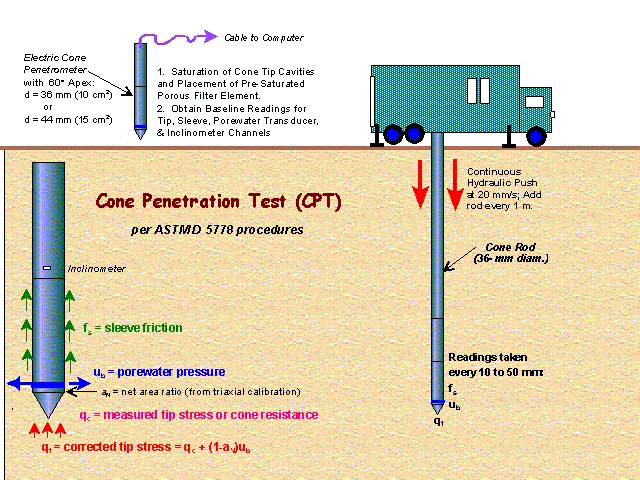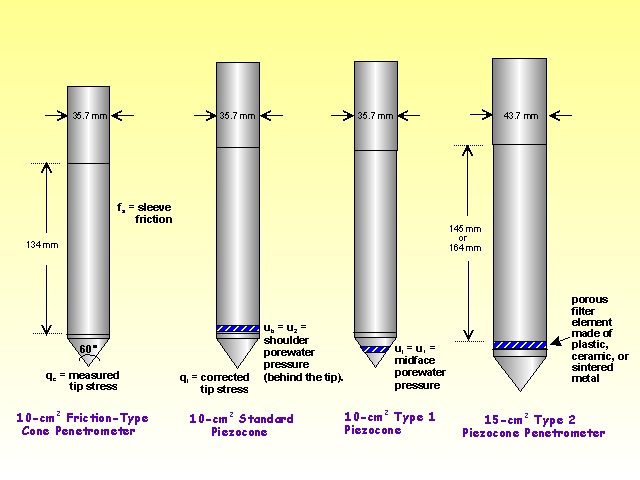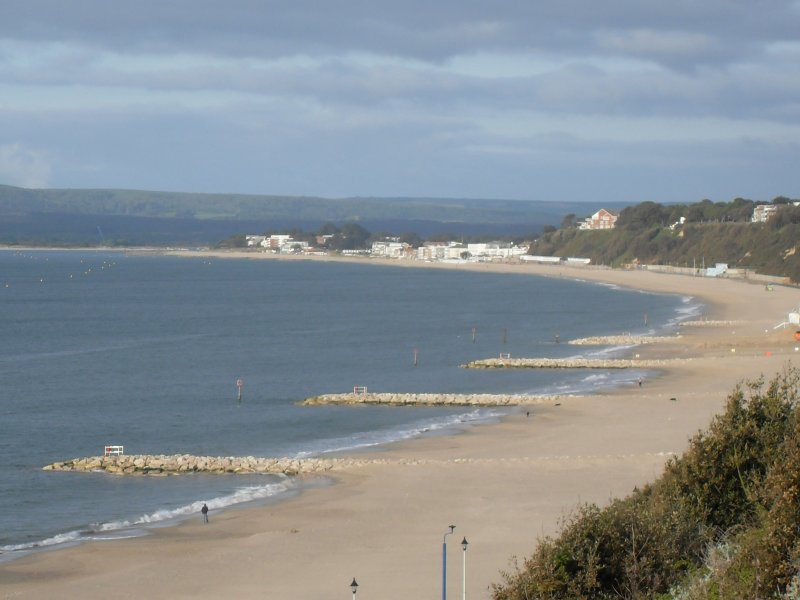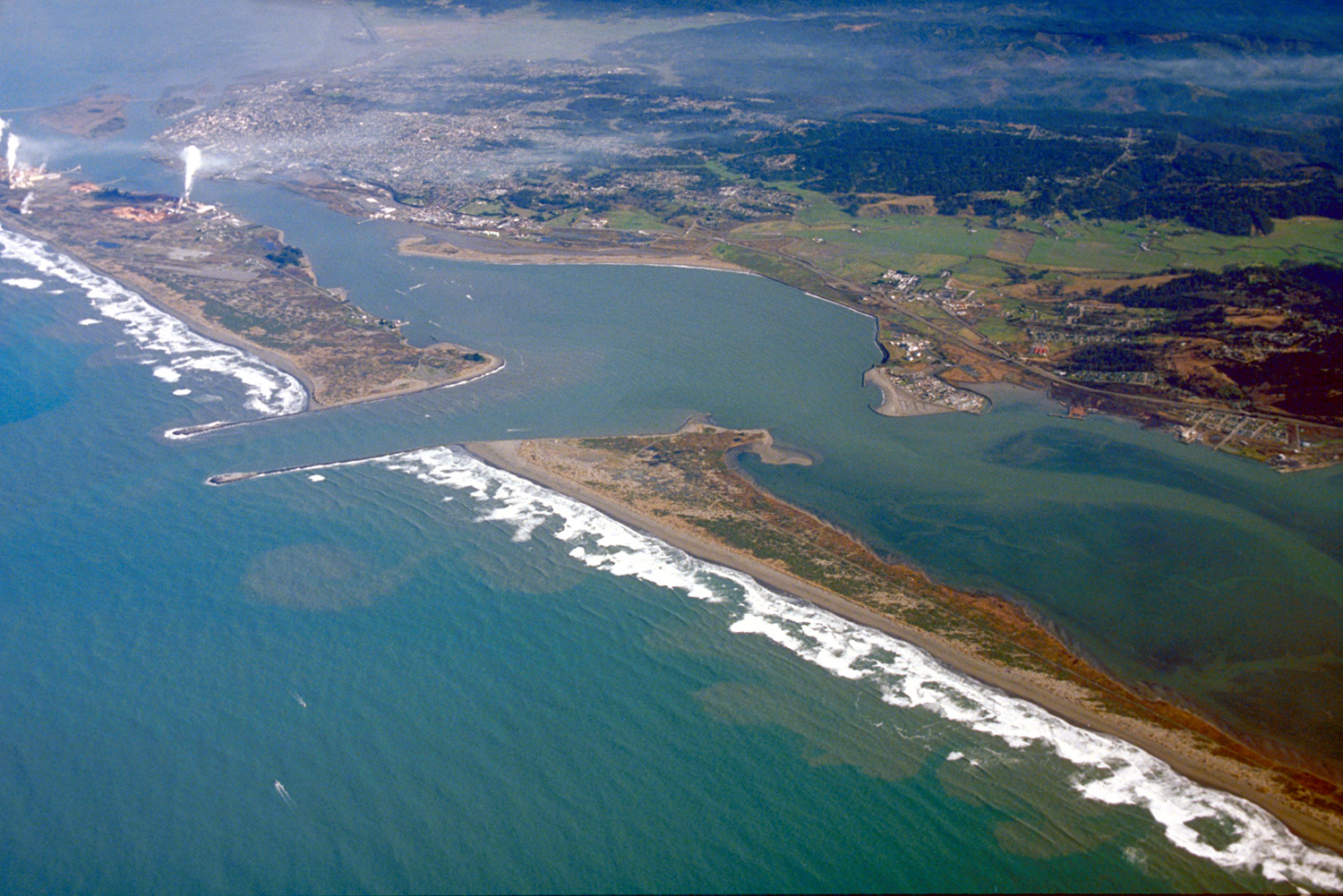
دنیای مهندسی سازه های دریایی
Offshore Structures
دنیای مهندسی سازه های دریایی
Offshore Structuresاجرایی عملیات بالانس در کار ژئوتکنیک/ Geotechnical work balance operations
این فیلم عملیات بالانس در کار ژئوتکنیک نشان می دهد.
The film shows the balance in the geotechnical work

بیشک یکی از روشهای بهبود خواص مکانیکی خاک افزایش تراکم آن است. روشهای مختلفی برای این کار وجود دارد، یکی از این روشها که بسیار سریع و ارزان میباشد (البته در مناطق غیرمسکونی) تراکم از طریق انفجارهای کنترل شده است. در پایان این فیلم با توجه به اینکه امواج تولید شده در اثر انفجار مشابه اعمال نیروی زلزله است، لذا جوشش ماسه به وضوح دیده میشود
فیلم نحوه آزمایش نفوذ مخروط با ماشین/Video of cone penetration test with car
این فیلم نحوه آزمایش نفوذ مخروط را نشان می دهد.
This is Video of cone penetration test



The cone penetration or cone penetrometer test (CPT) is a method used to determine the geotechnical engineering properties of soils and delineating soil stratigraphy. It was initially developed in the 1950s at the Dutch Laboratory for Soil Mechanics in Delft to investigate soft soils. Based on this history it has also been called the "Dutch cone test". Today, the CPT is one of the most used and accepted in soil methods for soil investigation worldwide.
The test method consists of pushing an instrumented cone, with the tip facing down, into the ground at a controlled rate (controlled between 1.5 -2.5 cm/s accepted). The resolution of the CPT in delineating stratigraphic layers is related to the size of the cone tip, with typical cone tips having a cross-sectional area of either 10 or 15 cm², corresponding to diameters of 3.6 and 4.4 cm. A very early ultra-miniature 1 cm² subtraction penetrometer was developed and used on a US mobile ballistic missile launch system (MGM-134 Midgetman) soil/structure design program in 1984 at the Earth Technology Corporation of Long Beach, CA
Cone Penetration Testing (CPT) is used to identify subsurface conditions in the upper 100 ft of the subsurface. The USGS CPT uses a 23-ton truck to push a “cone” into the ground. The weight of the truck is partially supported by both the tip of the cone and the sleeve of the cone. The “tip resistance” is determined by the force required to push the tip of the cone and the “sleeve friction” is determined by the force required to push the sleeve through the soil. The “friction ratio” is the ratio between sleeve friction and tip resistance, measured as a percentage. Soil type and thereby resistance to liquefaction can be inferred from these measurements

Design of Coastal Structures and Sea Defenses (Series on Coastal and Ocean Engineering Practice)-vol 2
این کتاب بنام طراحی سازه های ساحلی و محافظت آنها از دریا ،ویرایش دوم
Design of Coastal Structures and Sea Defenses (Series on Coastal and Ocean Engineering Practice)-vol 2, Young C Kim, World Scientific Publishing Company, 2015
This file is password & You can not print
Password: CE-MS MS.c Bijan Mohammadi
All text and change the color to use to download it
Download / دانلود Password/ کلمه عبور

این کتاب دارای 287 صحفه می باشد. سازه های ساحلی یک جزء مهم در هر طراحی جهت حفاظت از ساحل و طراحی آنها به طور مستقیم در کنترل موج و طوفان تاثیر به سزای روی خط ساحلی دارند.

برای فراهم کردن ثبات در ساحل و حفاظت از آن این کتاب پیشرفت های فنی ترین در زمینه طراحی و ساخت سازه های ساحلی در محافظت آنها از دریا می باشد. این کتاب آخرین ویرایش در فن آوری مهندسی سواحل در برنامه ریزی، طراحی و ساخت ساز، روش موثر مهندسی، پروژه های منحصره به فرد و چالش ها و مشکلاتی که در زمینه طراحی و ساخت ساز است یاد آوری نموده است در بخش های ساحلی، اقیانوس ها، کارهای عمرانی آنها و مهندسی ژئوتکنیک دریایی مباحث مهمی دارد.

در مطالب کتاب در قسمت شبیه سازی به عنوان هیدرولیک امکانات تست در دایک و سایر سازه های ساحلی این قسمت توسط پروفسور ون در میر نوشته شده است . ایشان دارای بیشتر مقالات علمی در زمینه مهندسی ساحلی و مهندسی اقیانوس می باشند.
Coastal structures are an important component in any coastal protection scheme. They directly control wave and storm surge action or to stabilize a beach which provides protection to the coast
This book provides the most up-to-date technical advances on the design and construction of coastal structures and sea defenses. Written by renowned practicing coastal engineers, this edited volume focuses on the latest technology applied in planning, design and construction, effective engineering methodology, unique projects and problems, design and construction challenges, and other lesions learned. Many books have been written about the theoretical treatment of coastal and ocean structures. Much less has been written about the practical practice aspect of ocean structures and sea defenses. This comprehensive book fills the gap. It is an essential source of reference for professionals and researchers in the areas of coastal, ocean, civil, and geotechnical engineering

Contents
- Simulators as Hydraulic Test Facilities at Dikes and Other Coastal Structures (Jentsje W van der Meer
- Design, Construction and Performance of the Main Breakwater of the New Outer Port at Punto Langosteira, La Coruña, Spain (Hans F Burcharth, Enrique Maciñeira Alonso, and Fernando Noya Arquero
- Performance Design for Maritime Structures (Shigeo Takahashi, Ken-ichiro Shimosako, and Minoru Hanzawa
- An Empirical Approach to Beach Nourishment Formulation (Timothy W Kana, Haiqing Liu Kaczkowski, and Steven B Traynum)
- Tidal Power Exploitation in Korea (Byung Ho Choi, Kyeong Ok Kim and Jae Cheon Choi
- A Floating Mobile Quay for Super Container Ships in a Hub Port (Jang-Won Chae and Woo-Sun Park
- Surrogate Modeling for Hurricane Wave and Inundation Prediction (Jane McKee Smith, Alexandros A Taflanidis and Andrew B Kennedy
- Statistical Methods for Risk Assessment of Harbor and Coastal Structures (Sebastián Solari and Miguel A Losada

The Civil Engineering Handbook, Second Edition, Wai-Fah Chen and J.Y. Richard Liew, CRC Press, 2003
این هندبوک شامل 2783 صحفه می باشد،که شامل اطلاعات از منابع معتبر هست.این کتاب برای دانشجویان مهندسی عمران در سطح کارشناس و کارشناس ارشد می باشد. شامل بسیار از فرمول ها و جداول که به راه حل های فوری به پرسش های دانشجویان مهندسی عمران، مهندس سازه، مهندسی محیط زیست،مهندسی مواد، مهندسی ژئوتکنیک، مهندسی نقشه برداری، مهندسی هیدرولیک و مهندسی حمل و نقل می باشد. فصل های آن عبارتند :
کتاب هندبوک مهندسی عمران
بخش اول : ساخت وساز
بخش دوم مهندسی محیط زیست
بخش سوم: مهندسی ژئوتکنیک
بخش چهارم: مهندسی هیدرولیک
بخش پنجم : مهندسی مواد
بخش ششم: مهندسی سازه
بخش هفتم : مهندسی نقشه برداری
بخش هشتم : مهندسی حمل و نقل
The Civil Engineering Handbook, Second Edition2003
This book contains information obtained from authentic and highly regarded sources. Reprinted material is quoted with permission, and sources are indicated. A wide variety of permission, and sources are indicated. A wide variety of references are listed. Reasonable efforts have been made to publish reliable data and information, but the authors and the publisher cannot assume responsibility for the validity of all materials or for the consequences of their use
The second edition of the Civil Engineering Handbook has been revised and updated to provide a
comprehensive reference work and resource book covering the broad spectrum of civil engineering. This book has been written with the practicing civil engineer in mind. The ideal reader will be a BS- or MS.c level
engineer with a need for a single reference source to use to keep abreast of new techniques and
practices as well as to review standard practices. Covering the traditional areas of civil engineering: construction engineering, materials engineering, environmental engineering, structural engineering, geotechnical engineering, surveying engineering, hydraulic engineering and transportation engineering
SECTION I Construction
SECTION II Environmental Engineering
SECTION III Geotechnical Engineering
SECTION IV Hydraulic Engineering
SECTION V Materials Engineering
SECTION VI Structural Engineering
SECTION VII Surveying Engineering
SECTION VIII Transportation Engineering
APPENDIX Mathematics, Symbols, and Physical Constants
This file is password
Password:CE-MS MS.c Bijan Mohammadi
All text and change the color to use to download it
دانلود/Download کلمه عبور/Password
